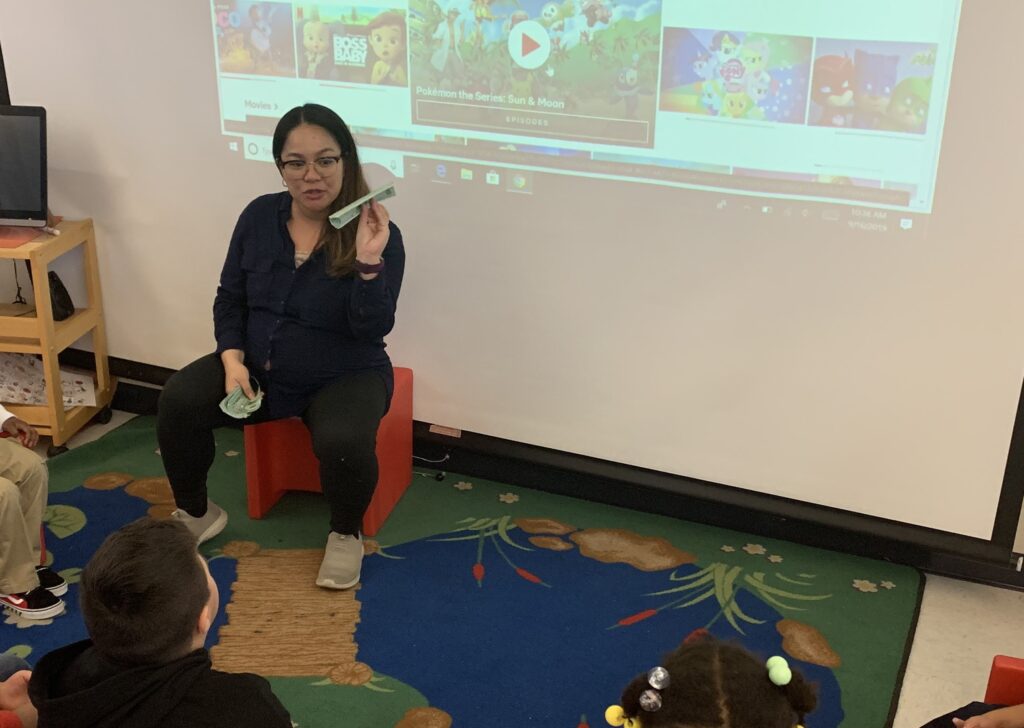
Courtesy Jenine Catudio
In 2016, 21 special education teachers from the Philippines were hired at a school district in the Bay Area. I was among the Filipino newcomers. The orientation took place in an oversize room, where echoes of Visayan and Tagalog dialects filled the space. As the session neared its end, the administrator asked, “Are there any questions?” The room fell silent, suggesting a collective no. Once he left, we eagerly exchanged queries and sought clarification from one another — in our native language.
What just happened?
There’s much to consider in that scenario. While no single explanation suffices, cultural norms likely played a significant role. Filipinos, often indirect communicators, favor subtlety over directness. In the Philippines, questioning authority can be seen as disrespectful. This potentially explains our reluctance to respond to the administrator. Additionally, the fear of speaking, driven by concerns about grammatical errors, mispronunciations and accents, can inhibit us from speaking up.
While communication is integral to our roles as educators, navigating the nuances of language and cultural expectations has presented unforeseen challenges. For instance, during one of my initial meetings with the principal, I described my class as “an amalgam of different abilities.” He asked me to repeat myself, highlighting the cultural gap in our communication styles.
After I administered a spelling test to a student who was about to exit special education, the student remarked, “Oh, I got a low score because you were saying each word differently,” referring to my accent. I explained that each word was used in a sentence, so understanding the context was key. Feeling self-conscious, I consulted the school speech-language pathologist about my accent potentially affecting the student’s test score. She responded, “I don’t think so, Jenine. You don’t have a strong accent. What you have, though, is pronoun confusion.” I laughed since I knew exactly what she was talking about. The English use of “he,” “she” and “him,” “her,” in place of the catchall “siya” in Filipino, often confuses me.
In another class, a student laughed at me when I put the stress on the first syllable instead of the second — the word was “adult.”
Clearly, there is a language barrier, and Filipinos are well aware of it. Despite English being a medium of instruction in the Philippines, we rarely use it in daily conversations. Vocabulary training encompassed terms like “amalgam” without addressing conversational nuances. Pronunciation differences, such as using the British /a.dult/ instead of the American /uh.dult/, went unclarified. Moreover, mastering gender pronouns demands continuous effort, contrasting with our natural usage in Filipino.
The following year, the recruitment agency that hired Filipino teachers in another district required English language classes for new hires. While teaching grammar rules enhances understanding of the language according to studies, applying these rules during spontaneous speech is much more challenging. It has less to do with understanding grammar and more to do with the process of language acquisition. For many years, recruiting teachers from the Philippines has been an answer to the worsening teacher shortage in California, resulting in a more diverse teaching workforce.
Reflecting on my journey, I realize that the benefits of speaking up outweigh my culturally rooted fears. As an educator in an underserved community in California, I needed my voice to advocate for my students. I realized that my colleagues didn’t mind my accent or minor grammar mistakes. It was encouraging. Although it took time, I eventually discovered a newfound confidence in expressing myself authentically. I learned that as long as I could get my point across, the specifics didn’t matter.
Does this imply that we are not holding Filipino teachers to the same standard as our students? Absolutely not. However, it’s crucial to remember that language proficiency does not correlate with overall cognitive abilities and intelligence. This understanding applies equally to our students.
Filipinos, as English learners themselves, can empathize deeply with minority students facing similar challenges. Drawing from these shared cultural experiences, they can offer invaluable contributions to culturally responsive classrooms. When students ask why I speak a certain way, I take the chance to share insights about my culture and heritage. It’s important to recognize our perceived weaknesses while harnessing our strengths to our students’ advantage. Rooted in our collective experiences of hardships, our heightened cultural sensitivity cultivates inclusivity and mutual understanding within the classroom. We understand firsthand the challenges, whether in language or culture, and use this empathy to create a culturally responsive learning environment.
•••
Jenine Catudio is a special education teacher and autism advocate from the Philippines who taught students with mild to moderate disabilities in West Contra Costa Unified in Richmond.
The opinions expressed in this commentary represent those of the author. EdSource welcomes commentaries representing diverse points of view. If you would like to submit a commentary, please review our guidelines and contact us.


